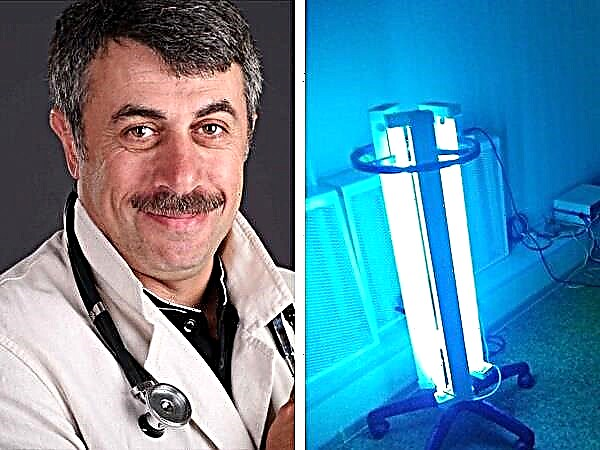
With the word "aerobics", most adults have a rather clear stereotypical association - a group of losing weight women in swimsuits simultaneously perform exercises aimed, of course, at losing weight. But this is only part of the truth. There is general and therapeutic aerobics, as well as aerobics for children, which this article is devoted to.


What it is?
Aerobics is a special kind of gymnastics that consists of aerobic exercise that you perform to music. Musical accompaniment helps to keep the rhythm and monitor the clarity and speed of the complex of movements. Initially, aerobics, indeed, was gymnastics for women and the American actress Jane Fonda became its main promoter. Thanks to her, the whole world learned about this sport.
But it was not she who invented aerobics, but Kenneth Cooper, a physiologist from the United States. This happened in the 60s of the last century. But his book and methodology before the Foundations received recognition only among doctors and athletes. Aerobics went to the people only at the suggestion of an artist and a world-famous beauty.

Children's aerobics appeared a little later as a modification of the adult set of exercises. It includes rhythm, walking and running, jumping and stretching exercises. Professional aerobics is also an art, as the teams stage group dances, characterized by the synchronization of movements and ligaments performed by teams of several people or single athletes.
Today, elements of aerobics for children are introduced into physical training programs in kindergartens and schools. All fitness centers have sections and groups for children's aerobics, and therefore it will not be difficult to enroll a child in such classes, especially since there are almost no restrictions for children in this sport.

What's the use?
It should be noted that aerobics does not know gender differences - both boys and girls can do it. Everyone will find something interesting and useful for themselves. For example, exercises requiring artistry and beauty of movements are better for girls, and complexes in which you need to demonstrate endurance and strength are more to the liking of boys. But it also happens the other way around.
If we talk about what such a sport can give a child, then we can give a lot of arguments "for". First of all, this kind of sport gently and unobtrusively teaches the child to love an active and mobile lifestyle, and not to sit in his free time in front of a computer monitor.
- Trainings are carried out in groups, and the child finds like-minded people on them, communicates, trains their communication skills.
- This load reduces the likelihood of childhood obesity and cardiovascular problems. Active movement helps to accelerate metabolism, fat burning. As a result, the child grows strong, fit, slim and beautiful.
- Training in the aerobics group requires a large burst of internal energy, which is especially important for children of preschool and primary school age, who most often have nowhere to put excessive energy. Throwing it out in movement, the child becomes more calm, attentive, focused.
- Children's aerobics helps to train self-control, endurance, willpower. It is especially important that all this happens in a team, which helps the child to embrace the team spirit. This makes it easier to find a common language with any team in a kindergarten, school, children's camp, or later - at the university and the work team.


The medical aspects of aerobics are multifaceted. This load helps to strengthen the muscles and the musculoskeletal system. Joints become stronger and more flexible, which reduces the likelihood of child injury. The respiratory organs are actively trained, which helps to reduce the number of respiratory ailments in childhood. Systematic aerobic exercise increases children's immunity.
Boys and girls have correct posture and gait. Metabolism and coordination of movements are improved. Children grow up to be more resilient and not afraid of physical activity. They are more active and less likely to suffer from depression.
A big plus of this sport is that it is not tied to the gym, outdoor workouts are also allowed, and such activities, you can be sure, are twice as useful.

Contraindications
It may sound strange, but this sport has almost no contraindications. After all, even a sick child can practice, just an individual set of exercises will be drawn up for him, taking into account the type and type of ailment. For example, for babies who suffer from chronic respiratory diseases, endurance exercises are excluded, but the artistic and rhythmic complex is left.
Nevertheless before registering a child for aerobics, you need to visit a pediatrician with him and provide a certificate of health to the trainer. The doctor can indicate the preferred and prohibited types of load, which will help the trainer to create a program taking into account individual characteristics.
Usually doctors look favorably on this type of sports activity and limit it only for children with severe heart defects and complex disorders of the musculoskeletal system.
Temporary restrictions on aerobics classes are introduced for children who are sick with viral infections, are undergoing rehabilitation after injuries and surgical operations. When they can return to individual training or to their group, it depends on the specific disease, the terms will be set by the attending physician.

Varieties
There are three main types of aerobics - wellness, dance and sports. In the last couple of decades, this small list has been supplemented with two more positions - step and power aerobics. But in reality, the range is much wider.
Dance
Rhythmic gymnastics that regulates the level of load. It has an excellent health-improving effect. Includes not only muscle development exercises, but also dance elements. Separately distinguish tango aerobics, jazz aerobics, latin and hip-hop, as well as city jam and funk aerobics. Here, to whom what kind of music and style is closer to the soul.

Step aerobics
Excellent workout for the musculoskeletal system. It is carried out using special platforms up to ten centimeters high. Recently, spectacular and beautiful championships have been held on it.

Tai-bo
A special type of aerobics, which is aimed at normalizing muscle tone, strengthening them, improving the functioning of the heart and blood vessels.

Resist-ball
This sport trains more coordination of movements, increases body flexibility. Corrects posture, and therefore is often recommended for children with problems of the musculoskeletal system.

Power
Exercise complexes are associated with increased loads and weights in the form of dumbbells and weighted sticks. This type speeds up metabolism and helps to cope with obesity.

Sports
This is a sport in its most direct sense. Coordination is difficult, multi-part exercises. This type includes kick aerobics, boxing aerobics, pump aerobics.

If you yourself cannot decide on the type, it is worth seeking advice from a children's fitness trainer.
Suitable age
You can send a child to aerobics at a very tender age - from a year or a half years. For preschoolers, classes are conducted in a playful way. The first level groups usually include the youngest children - up to 3 years old. From 4 to 5 years old, children are expected in the next age group - preschool. At 6-7-8 years old, the child can start classes in a group of schoolchildren.
For kids, workouts are light, playful and last no more than 10 minutes. Older children can engage in sports and strength aerobics, workouts in which start from half an hour, and dance classes usually last from 20-30 minutes or longer.
If we talk about the frequency of classes, then children under 3 years old should attend the section a couple of times a week, children older - 3 times.


Features of children's activities
The goal in children's aerobics groups is not to raise children to be Olympic champions and strongmen on the planet. Sports results are not the main thing here - it is much more important to instill the habit of leading a healthy and active lifestyle.
Trainings are held in compliance with security measures. It is very important to reduce even the potential for injury. To do this, the lesson always begins with a light warm-up., which helps to "warm up" the muscles and prepare them for the upcoming load.
The second important principle is the usefulness of everything that happens.
The child will never get any benefit if he visits the section from under the stick, forcibly, if he does not like to study. Therefore, coaches do not force children to do exercises that for some reason they do not like.

The competitive spirit in aerobics is not the main thing. It is much more important that the self-esteem of each child in the group rises. Therefore, the coach will not scold the kid or teenager if something does not work out for him, otherwise, he is a bad coach, from whom you need to refuse.
The child doing aerobics should always have a voluntary choice. All experienced trainers and experts in this type of fitness speak about this. He may or may not take part in some events, competitions, performances. And so that children do not refuse, they need to be properly motivated. This is what an experienced mentor will do.

Examples of exercises
Each type of aerobics has its own set of exercises and individual elements, but the basic exercises are still the same for almost all varieties of this sport.
it running, steps of varying intensity, bending, squatting, exercises for the upper and lower extremities, shoulder girdle, abs, back.
In the dance form, the steps that are characteristic of certain dances are actively used, for example, in tango - exercises on the back and legs, in Latin - on the hips, back, stomach and arms, etc.
The following types of load can be applied in the health complex
- push-ups performed with emphasis from a kneeling position;
- maintaining balance while standing on one leg;
- maintaining balance with a gradual smooth change in the position of the body on one leg, for example, with tilting the body from this position;
- bringing straight and unbent legs to arms, sitting on the floor with the effort of the press;
- twine;
- jumping with legs apart in the air;
- jumping with the legs to the chest in "flight".


In sports aerobics, exercises are more complex:
- push-up in lying position;
- horizontal raising of the legs together above the floor on the hands;
- jump with wide legs in "flight" almost to the horizontal line and a slight forward tilt of the body;
- crawling through the twine.

A specific list of exercises is determined by the trainer depending on the chosen type of aerobics, the child's age, the degree of his physical fitness, his state of health and the recommendations of pediatricians.
How the dance aerobics lesson takes place, see below.



